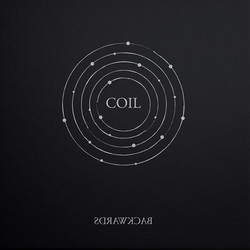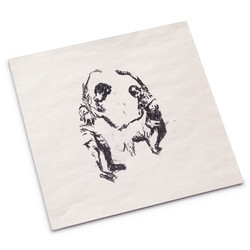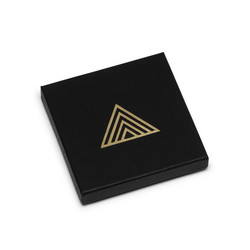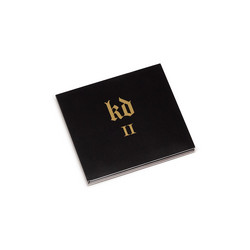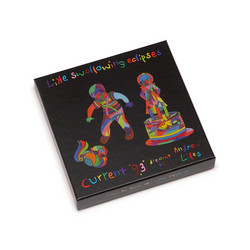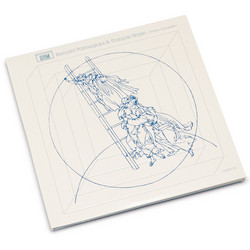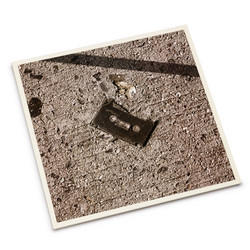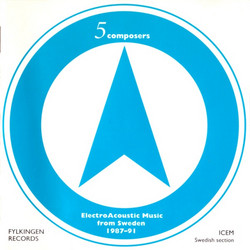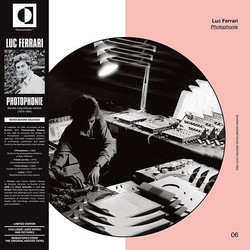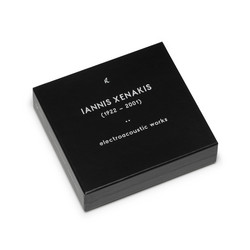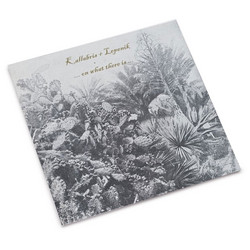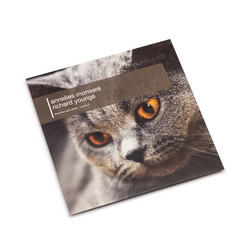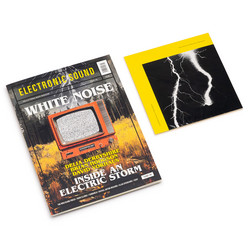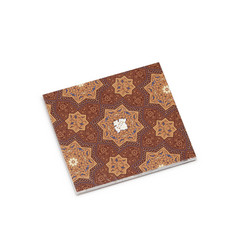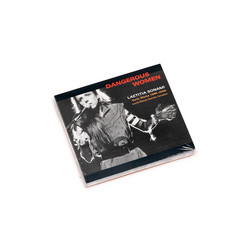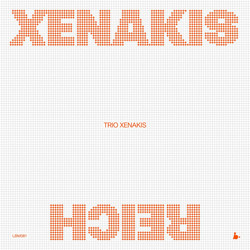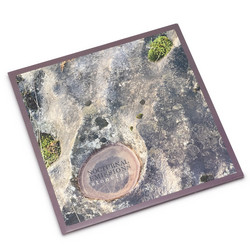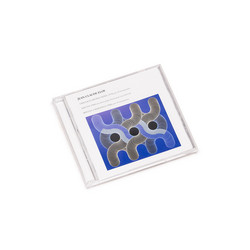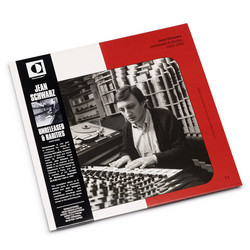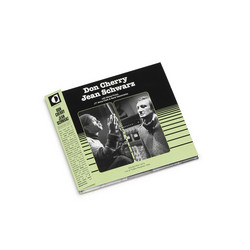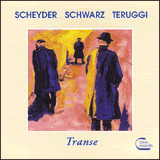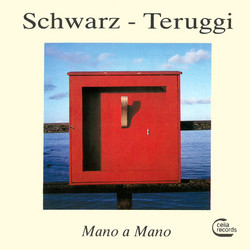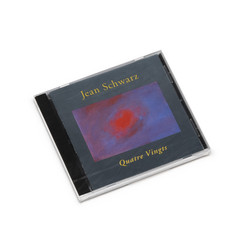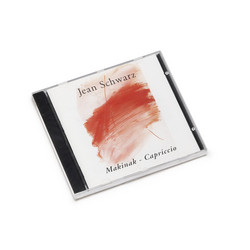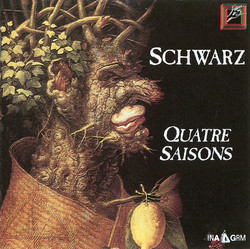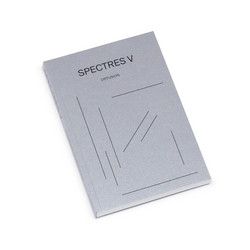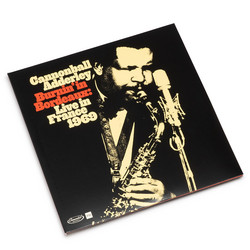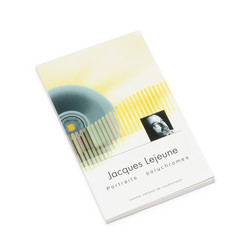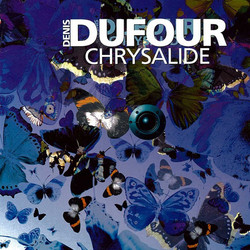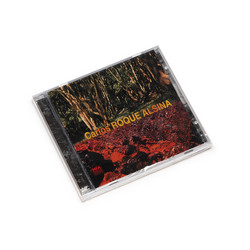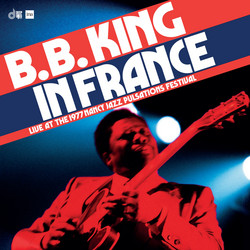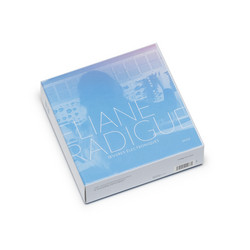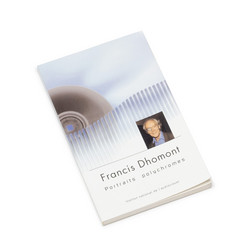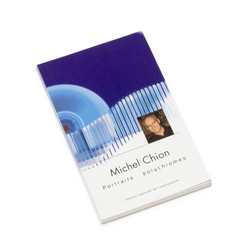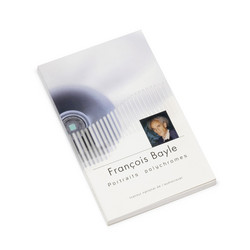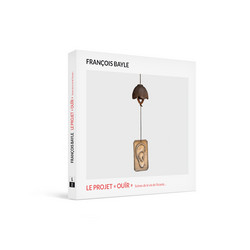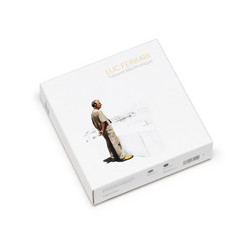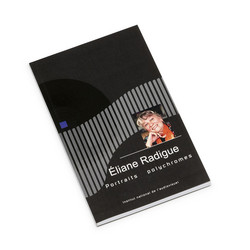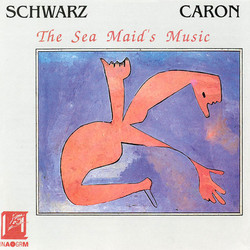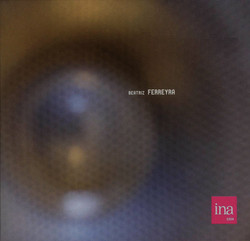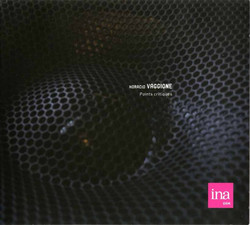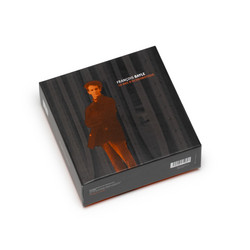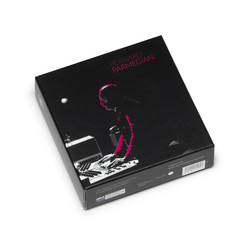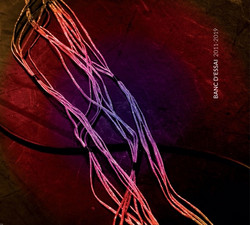1
2
3
File under: ElectroacousticMusique Concrète
Jean Schwarz
Erda - Symphonie - Surroundings
* 2021 Stock * Few copies available, engrossing electro-acoustic work from the GRM archive circa 1971, 1974 and 1974. Highly dynamic, even playful, with a keen sense of rhythm and movement between myriad prisms by the legendary French composer and ethnomusiclogist Jean Schwarz
Erda (1971), 26’55
This first work is the illustration of research done during the discovery of the professional composition studio. After studying each device and making more or less hybrid connections, I chose to compose several short sequences, each one being the expression of a research based on a well-defined manipulation and sound spectrum.
The sounds coming from the electronic generators do not belong to the surrounding nature; they do not have the warmth of sounds of instrumental or concrete origin. In order to make them musical and sensitive, they must be humanised. The title, “Erda”, is already an attempt at conditioning since it is the name Wagner gave to the Goddess of the Earth in the “Ring of the Nibelungen”.
A background as a percussionist and jazzman also prompted me to make a rhythmic study in each of these sequences. “Erda” consists of eight movements, and it was commissioned by the GRM, Paris 1971.
Symphonie (1974), 23’45
A better knowledge of music around the world, the infinite variety of timbre of the instruments used, the vocal and playing techniques that we discover every day in every country, cannot leave the musician indifferent. His role becomes multiple because today's means give him the chance to bring out the well-established values on which music has been based for centuries. Those who live in the electroacoustic universe are faced with an infinite field of possibilities that allow a perpetual questioning of research.
In our fascinating and somewhat crazy profession, it is imperative to constantly renew oneself, already in relation to oneself and above all in relation to others. The means of the studio offer this permanent questioning of the sound universe. It has always seemed to me that the works in the acousmatic repertoire sounded like chamber music and that few composers had been sensitive to the new possibilities of orchestration offered by electronic sounds and the treatments associated with them. Rarely does a work for tape contain a richness of range greater than that provided by the superimposition of 15 or 30 fundamental frequencies. What do these 30 or so fundamental sounds, which are generally not very rich in harmonics, represent in relation to the characteristic spectrum of the 100 or so notes emitted simultaneously by the orchestra?
Rather than develop in detail one of the ideas sketched out during my early work (“Erda”, “Anticycle”, “Il était une fois”), it seemed more interesting to me to temporarily leave aside the studio as a sound generator, like the manipulations that have become familiar to me, to concentrate the work on two points: the study of a classical form and the marriage of orchestral sounds with synthetic sounds.
It may seem futile and presumptuous to conceive of a symphony in this day and age if one refers to a classical tradition of which Bruckner and Mahler, to some extent, represent a culmination. In the present case we must disregard this heritage and keep from the idea of symphony only the notion of chord, of a set of sounds: phony.
The spirit of the piece is more like that of the symphonic poem than that of the symphony in several movements. The main themes are exposed, developed and taken up again in the final coda. The recording of the strings was made by the ORTF Chamber Orchestra conducted by Guy Reibel. “Symphony” was commissioned by the GRM, Paris 1974.
Surroundings (1979), 53'05
André Francis suggested that I create a tape made up of atmospheres and colours specific to the U.S.A., a tape that will be used as a support for the playing of two jazz musicians. With a news tape recorder I toured the cities where jazz was alive, recording all the characteristic sounds of American cities, from the underground to the interview. But although nothing resembles the atmosphere of a large metropolis more than that of another important city, I kept a few highlights of the sound impressions I received and articulated the composition around nine movements.
Charles Austin: saxophones and flute
Joe Gallivan: percussion including two toms connected to a Moog synthesizer.
Produced by Celia Records Studio 1978-1979.
Recording C. Zanési.
Erda (1971), 26’55
This first work is the illustration of research done during the discovery of the professional composition studio. After studying each device and making more or less hybrid connections, I chose to compose several short sequences, each one being the expression of a research based on a well-defined manipulation and sound spectrum.
The sounds coming from the electronic generators do not belong to the surrounding nature; they do not have the warmth of sounds of instrumental or concrete origin. In order to make them musical and sensitive, they must be humanised. The title, “Erda”, is already an attempt at conditioning since it is the name Wagner gave to the Goddess of the Earth in the “Ring of the Nibelungen”.
A background as a percussionist and jazzman also prompted me to make a rhythmic study in each of these sequences. “Erda” consists of eight movements, and it was commissioned by the GRM, Paris 1971.
Symphonie (1974), 23’45
A better knowledge of music around the world, the infinite variety of timbre of the instruments used, the vocal and playing techniques that we discover every day in every country, cannot leave the musician indifferent. His role becomes multiple because today's means give him the chance to bring out the well-established values on which music has been based for centuries. Those who live in the electroacoustic universe are faced with an infinite field of possibilities that allow a perpetual questioning of research.
In our fascinating and somewhat crazy profession, it is imperative to constantly renew oneself, already in relation to oneself and above all in relation to others. The means of the studio offer this permanent questioning of the sound universe. It has always seemed to me that the works in the acousmatic repertoire sounded like chamber music and that few composers had been sensitive to the new possibilities of orchestration offered by electronic sounds and the treatments associated with them. Rarely does a work for tape contain a richness of range greater than that provided by the superimposition of 15 or 30 fundamental frequencies. What do these 30 or so fundamental sounds, which are generally not very rich in harmonics, represent in relation to the characteristic spectrum of the 100 or so notes emitted simultaneously by the orchestra?
Rather than develop in detail one of the ideas sketched out during my early work (“Erda”, “Anticycle”, “Il était une fois”), it seemed more interesting to me to temporarily leave aside the studio as a sound generator, like the manipulations that have become familiar to me, to concentrate the work on two points: the study of a classical form and the marriage of orchestral sounds with synthetic sounds.
It may seem futile and presumptuous to conceive of a symphony in this day and age if one refers to a classical tradition of which Bruckner and Mahler, to some extent, represent a culmination. In the present case we must disregard this heritage and keep from the idea of symphony only the notion of chord, of a set of sounds: phony.
The spirit of the piece is more like that of the symphonic poem than that of the symphony in several movements. The main themes are exposed, developed and taken up again in the final coda. The recording of the strings was made by the ORTF Chamber Orchestra conducted by Guy Reibel. “Symphony” was commissioned by the GRM, Paris 1974.
Surroundings (1979), 53'05
André Francis suggested that I create a tape made up of atmospheres and colours specific to the U.S.A., a tape that will be used as a support for the playing of two jazz musicians. With a news tape recorder I toured the cities where jazz was alive, recording all the characteristic sounds of American cities, from the underground to the interview. But although nothing resembles the atmosphere of a large metropolis more than that of another important city, I kept a few highlights of the sound impressions I received and articulated the composition around nine movements.
Charles Austin: saxophones and flute
Joe Gallivan: percussion including two toms connected to a Moog synthesizer.
Produced by Celia Records Studio 1978-1979.
Recording C. Zanési.
Details
File under: ElectroacousticMusique Concrète
Cat. number: CL2022-23
Year: 2000
Notes:
CD1 originally issued as [r=291890]
CD2 originally issued as [r=253603]
Disc 2 track lengths are incorrect on artwork.
